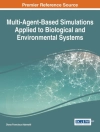Available as an e Book only.The screening Trace Organic Chemical (TOr C) ecological risk approach, developed previously, was evaluated using seven case studies, located in Pennsylvania, Ohio, Colorado, California, and Ontario, Canada. Sites represented a range of complexity, types of biological impacts, and wastewater effluent dilution at low flow. Several different techniques for diagnosing potential effects of TOr Cs were incorporated in these case studies including EPA s causal analysis framework, CADDIS; Canada s Environmental Effects Monitoring (EEM) approach; the consumer products ROUT model and the pharmaceutical model Ph ATE to predict concentrations of certain TOr Cs at a wastewater-influenced site; and ecological modeling (Comprehensive Aquatic Systems Model, CASM). Both prospective and retrospective assessments are represented in these case studies illustrating how various tools can be used to determine whether TOr Cs are or could be a cause of biological impairment. At most sites, high priority TOr C data (using any of the TOr C prioritization approaches previously developed in this project) were unavailable. At five of the seven sites, the screening approach indicated a potential for risk due to TOr Cs based on the type of wastewater treatment available (secondary treatment with little or no nutrient removal, potential input sources of TOr Cs present in addition to domestic sources) and the relatively high effluent concentration under low flow conditions. Except for two sites, data were unavailable for at least one level of biological organization making it difficult to evaluate TOr Cs as a cause of impairment. The lack of diagnostic TOr C exposure data (i.e., suborganismal or organismal measures indicative of exposure to a certain class of TOr Cs), or organism effects data (e.g., intersex, lesions) at most sites restricted our ability to diagnose whether certain TOr Cs could have contributed to observed biological impairment at these sites. Our analyses confirm that the comprehensiveness and sensitivity of the population/ community assessment is a critical factor affecting the success of diagnostic analyses. Indices of biological integrity (IBI) and most metrics that constitute such indices, offered little definitive diagnostic information regarding risks due to TOr Cs, but were useful in supporting or eliminating other types of stressors such as excess nutrients and habitat quality. None of the case studies examined had sufficient TOr C data with which to demonstrate linkages between concentrations of specific TOr Cs or groups of TOr Cs and organism effects. However, results from two sites suggested that TOr C concentrations exceeding conservative screening threshold values may not result in observed effects at either the organism or population level based on the endpoints measured. While some of the case studies demonstrated apparent linkages between exposure to estrogenic chemicals and organism effects, none had sufficient information to definitively link organism and population/community level effects. Defining the conditions under which organism TOr C effects are likely to manifest as a population-level effect at a site should be a critical component of Phase 2.
Jerome M. Diamond
Testing Diagnostic Tools for Trace Organic Compounds and Multiple Stressors [PDF ebook]
Case Studies
Testing Diagnostic Tools for Trace Organic Compounds and Multiple Stressors [PDF ebook]
Case Studies
Придбайте цю електронну книгу та отримайте ще 1 БЕЗКОШТОВНО!
Мова Англійська ● Формат PDF ● ISBN 9781843395393 ● Видавець IWA Publishing ● Опубліковано 2010 ● Завантажувані 6 разів ● Валюта EUR ● Посвідчення особи 2998874 ● Захист від копіювання Adobe DRM
Потрібен читач електронних книг, що підтримує DRM












